Toxic Individualism is Hurting the Alabama Hills. Indigenous Knowledge Can Save Them.

High & Dry surveys the legacy of human enterprise in the California desert. Together, writer/historian Christopher Langley and photographer Osceola Refetoff document human activity, past and present, in the context of future development.
"We shape landscape and language; they shape us"
– Anne Whiston Spirn, The Language of Landscape, 1998, p. 24
I headed for the Alabama Hills in Inyo County, California where I live. The hills are a sacred site for the Paiutes, nestled against the towering Sierra Nevada. The ochre-colored granitic boulders are stained with manganese encrustations, the rock surfaces fashioned into organic shapes by desert sand and winds.
Holes and craters have also been carved by the geological forces of exfoliation caused by extreme changes in temperature.
The day has been difficult with the normal frustrations of recalcitrant technology, uncaring professionals and disappointing friends. Then there is the horror of the Russian War on Ukraine, the latest COVID statistics and the incivility of people with differing political views. Standing amidst these rocks brings a sense of peace, relaxation and safety. A quiet time with nature in the Alabama Hills has saved my day and I am ready to rejoin the human race.

The potential of landscape, space and place is very powerful in shaping human lives. The landscape in which we reside can significantly affect our dominant personality, create our sense of identity, make us healthy or ill, and cause us to be predominantly content or pessimistic. Yet seldom do we fully appreciate or acknowledge the landscape within which we live.
But things are changing. Slowly and imperfectly, public land restoration continues ineluctably. In this essay, we will examine why, as a species, we sometimes abuse, misuse and often take little responsibility for protecting and preserving our planet, the only one we have. Yet, we are also learning good, responsible stewardship practices, often from the original residents of these lands from which they were violently removed.

A Sacred Relationship With the Natural World
Every day, media spokespeople, spiritual elders, scientists and planet caretakers warn us about pollution, climate change, natural resource plundering and thoughtlessness towards those who will follow. Most public lands were originally ministered by our Indigenous populations, and they are still here, often living near these lands they inhabited for hundreds, even thousands of years. The Alabama Hills ask the nearly universal question: Can we change human intention and behavior? There is hope, but there is also a conundrum of conflicting behaviors based on differing and deeply ingrained cultural values.
Ojibwa Indigenous cultural historian and novelist David Treuer identifies and fully articulates an interesting turn of events in an article published last year in The Atlantic magazine entitled "Return the National Parks to the Tribes." I want to thank Patricia Streeland, working in the University of California Berkeley Writing Project, for alerting me to this article.
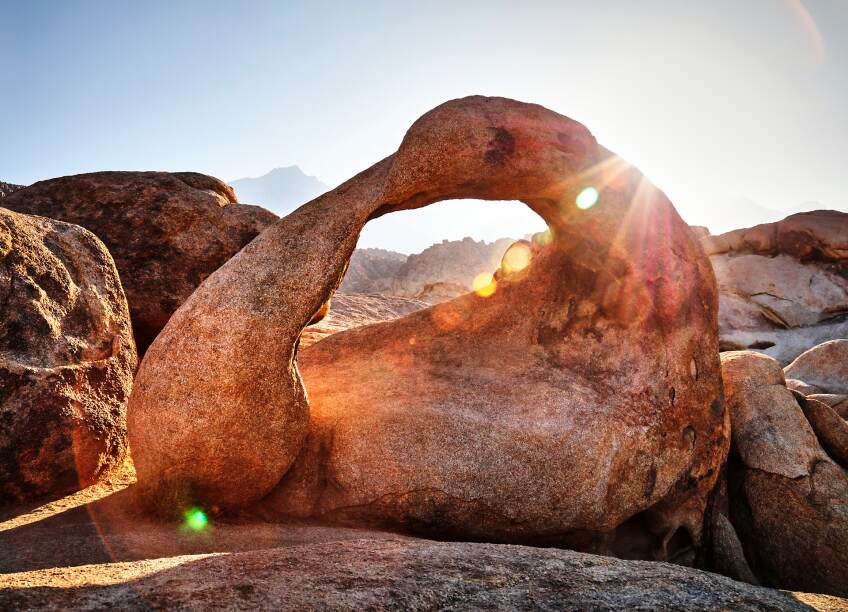
Treuer is writing of our national park system and his argument is laced with a short review of how the American government openly waged a genocide against Indigenous peoples. Yet today, our more than 550 tribes are still here.
Treuer states:
"Our survival hasn't mattered only to us: As the efforts to assimilate us largely failed and we remained, mostly, in our homelands, Americans have gradually assimilated to our cultures, our worldview, and our modes of connecting to nature. The parks enshrine places, but they also emphasize and prioritize a particular way of interacting with the land. In the nation's mythic past, the wilderness may have been a dangerous environment, something to be tamed, plowed under, cut down. But that way of relating to the land is no longer in vogue. For many Americans, our wild spaces are a solace, a refuge — cathedrals indeed."
Treuer summarizes, citing a "new" assimilation, quite different from the failed one tried with the Indigenous people. "America has succeeded in becoming more Indian over the past 245 years rather than the other way around."
Some examples of this new assimilation: care of the forest and plains by controlled burning, water conservation and continually rebuilding and enriching the soil through crop rotation and mulching strategies. Most importantly, maintaining a sacred relationship with the natural world based on respect and appreciation.
Is It Possible to Love a Landscape to Death?

The Alabama Hills is a beautiful, scenic, diverse and world-famous location, sought out by artists, filmmakers and tourists for its landscape allure. Situated outside Lone Pine, California at the base of Mt. Whitney, the area experiences 20-mile-long shadows most evenings and rare Sierra Wave cloud formations in winter and spring. People travel from all over the world to hike, climb, photograph and soak in the magnificent grandeur. Yet over the years these hills have been used, abused and vandalized by visitors despite the Bureau of Land Management's (BLM) attempts to manage, protect and restore the area. Is it possible to love a landscape to death?
Seeing the state of the Alabama Hills worsening, local residents formed the Alabama Hills Stewardship Group (AHSG) to assist and support the Bureau of Land Management in its work. This was followed by a draft management plan examined carefully by Indigenous citizens and many other interested parties. Now comes implementation. Should the number of campsites be reduced from over 120 to no more than 50, and if so, which ones will be eliminated and which ones kept? In the end, who gets to decide?

Being the Inyo County Film Commissioner requires me to spend significant time working in the Alabama Hills. That led me to realize the hills needed more loving attention than they were getting. I had already organized a smaller group made up of the members of two boards of trustees: the Museum of Western Film History and the Lone Pine Chamber of Commerce. The meetings were social in nature, with food, beverages and conversation. We made excursions to the rocks and discussed what we saw.
Later, with the support of some friends in the BLM, we formed the ASHG. The idea of land stewardship has always appealed to me. When I began the task, I did not realize how conflict-laden land management, jurisdictional control and the implementation of protection measures can be. Call me naive. These issues — with the added complication of the growing distrust of the federal government — made the first public meetings well-attended and highly animated by differing points of view.
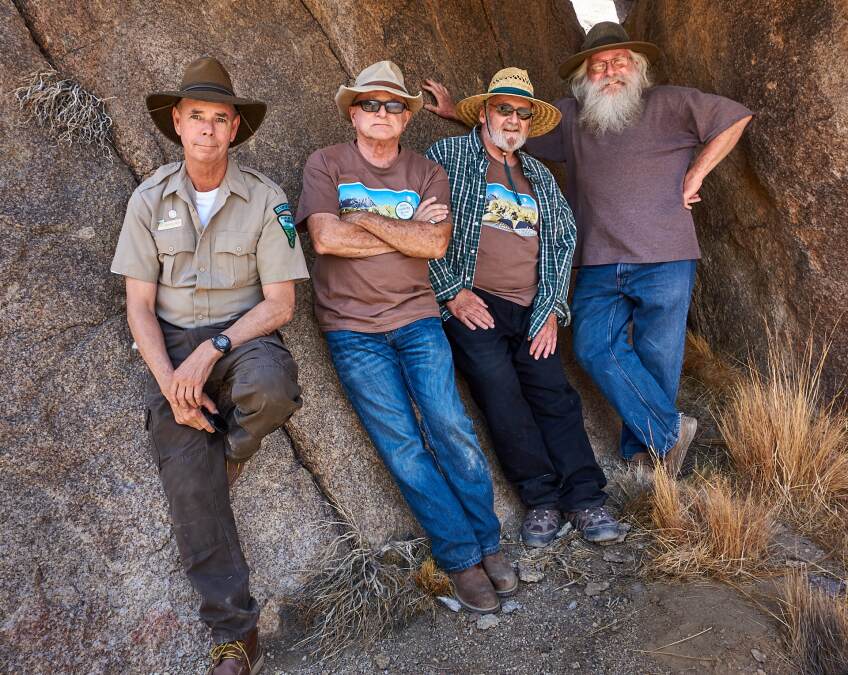
After a year, I thought everyone had gotten to know each other, building the missing trust that had impeded progress towards similar goals in the past. I was confronted at the museum on two occasions by people who were concerned that I was leading towards a plan to heavily control access to the hills. I assured them that it was not the BLM, but an ad hoc grassroots organization that was leading the way.
When the public group convened, the first thing we did was discuss and slowly create a vision statement for the hills. It spoke to what we wanted for this beautiful landscape: that it be preserved for our children and grandchildren.
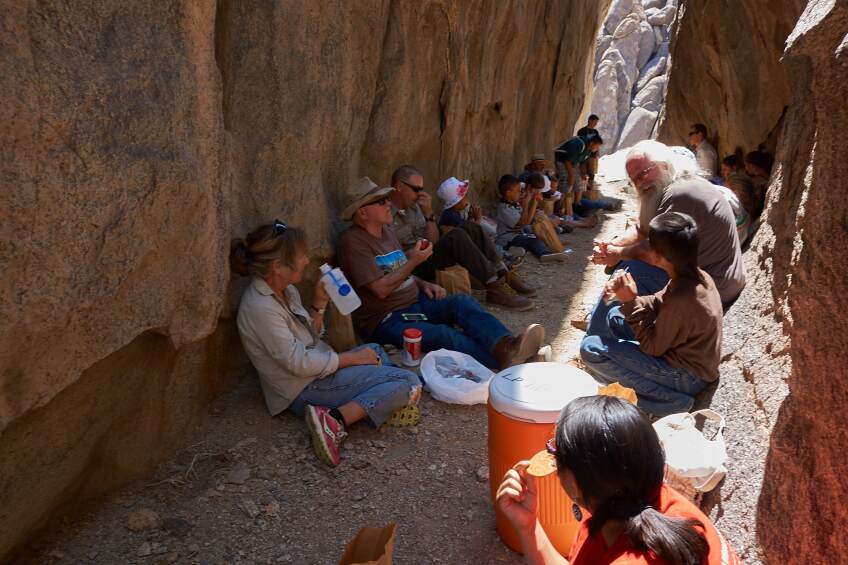
It read,
Alabama Hills Vision Statement
The silence, open vistas and natural beauty of the Alabama Hills in Lone Pine reflect a sense of peace, a respect for the land and accessibility for the responsible user. The goal the community of Lone Pine, BLM and individual stakeholders has is to work together as good stewards.
From the grand scale of geography to the smallest details of flowers, from the sudden power of the wind to the timeless processes of geology, the Alabama Hills draw people to wander, contemplate, experience solitude and enjoy an incredible range of discovery and activity.
While visitation and multiple use by outdoor enthusiasts, sports lovers, artists and visitors is increasing, the rocks, roads, hiking paths, creeks and flora remain scenic and unspoiled. Film industry use continues, but with a heightened sense of history for both the area and the films of Hollywood.
The fragility of the area, management for sustainable activity, and the mutual respect of the stakeholders add to the area's unique and special needs. The play of light and quality of air lift the spirit and assure the participants that all challenges can be addressed and solutions found by listening and working together. These Alabama Hills continue to foster an important and complex relationship with all of us.
For the next decade, I would read this mission statement at the beginning of each meeting, so that every decision, every discussion, was guided by it.
Hyperindividualism: A Toxic Celebration
Most people seem to love this landscape and yet their use of it can be thoughtless, careless and ignorant. One prevalent attitude and behavior has been labelled "toxic hyper-individualism" by social scientists and academics.
The online website wisdomwordsppf.org offers these comments: "'Hyper' — from the Greek 'huper,' meaning over, beyond. 'Individualism' — the stance or philosophy that values the moral worth of the individual as well as independence and self-reliance." The entry continues, "In the US, individualism generally has a positive meaning and often (or at least should) lead to the development of each person's fullest potential. Hyperindividualism, on the other hand, is individualism in the extreme and, by definition, unethically supersedes the common good."

In our American culture, we admire rugged individualism, but today the term is being used to explain why COVID-19 vaccination resistance has become such a personal flash point, fueling an anti-science stance. The word "mandate" makes many people feel their basic freedoms are threatened.
Jean Kim, M.D. in her article "How America Fell into Toxic Individualism" writes, "America was founded in part on the cult of the individual, the self-made myth, the will to power. And indeed we cannot ignore the core egotism of human nature, the need to channel that drive to succeed and establish one's sense of self and identity, against all odds."
Dr. Kim continues, "A lack of empathy, an indifference to human vulnerability and suffering, to misfortune and lack of opportunity and circumstances, to exploit and ignore these realities can harm everyone. No man is an island as John Donne famously noted."

If you stop and think about it, there are many examples in our society of people acting without thinking or caring about the effect on others. I believe that the opposition to mask mandates primarily endangers others around us. Litter that mars our national landscape, greed that disregards the destruction of our planet, recreation that destroys the opportunities of future generations, all have many causes, but primary is this toxic celebration of hyper-individualism.
Where Do We Go From Here?
So you may be wondering, "How are things going in the Alabama Hills?"

In a recent local paper article, The Inyo Register reporter Jon Klusmire states, "New camping regulations in the Alabama Hills are being followed and are getting good reviews so far this year from campers venturing into this scenic area, according to the Bureau of Land Management." Sheri Lisius is the Bureau of Land Management Bishop Office Acting Field Manager. She oversaw the creation of the management plan for the Alabama Hills National Scenic Area and thanked the volunteers and partners for all their help in cleaning up the area, removing 150 illegal fire rings, four tons of trash and lots of human waste. "It's a big place and we can't do it alone."

My interest is in promoting filming while protecting the landscape. Film production continues at a steady pace in the Alabama Hills even with COVID and a "roller coaster" economy. The BLM is very supportive of the film industry and their use of the landscape, while taking special care that the land is not damaged. Once in a great while, an unpermitted project attempts to film here. Once, I found a reasonably large crew with three four-wheel drive vehicles up on rocks. I asked about a permit and they had none. They said they had come from the Laws Railroad Museum, where they also didn't have permission to film. I asked them to remove the vehicles and leave. They quickly packed up and sped off.
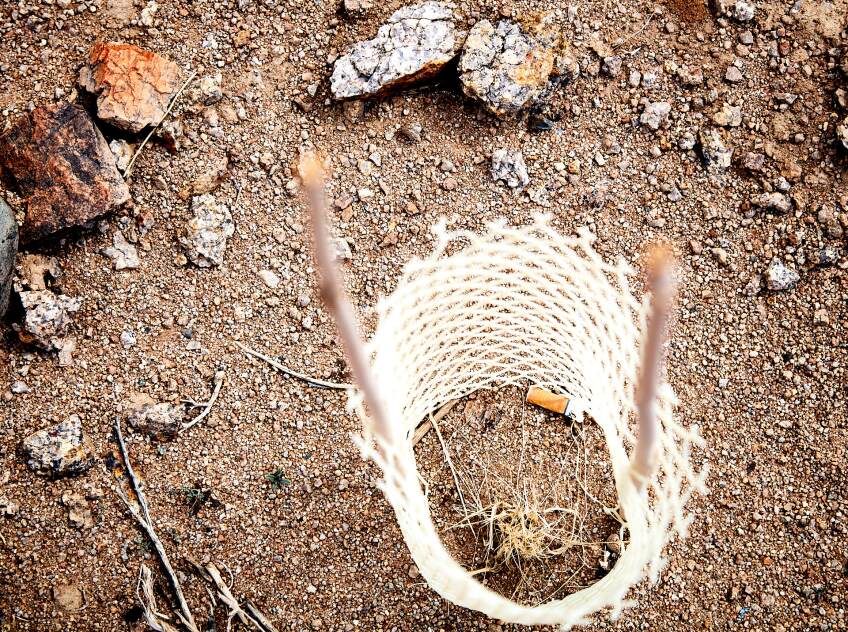
Occasionally a film company will cause damage through carelessness. The BLM can bill them for restoration expenses. Lack of fire permits with campers and the creation of fire rings are an on-going problem. Rocks become stained with dark soot, and it is difficult to return them to the landscape.
This is not to say things are perfect, but I have witnessed more respect for observing and protecting the "semi-primitive" state of this land since the scenic designation was approved by Congress and signed into law in 2019.
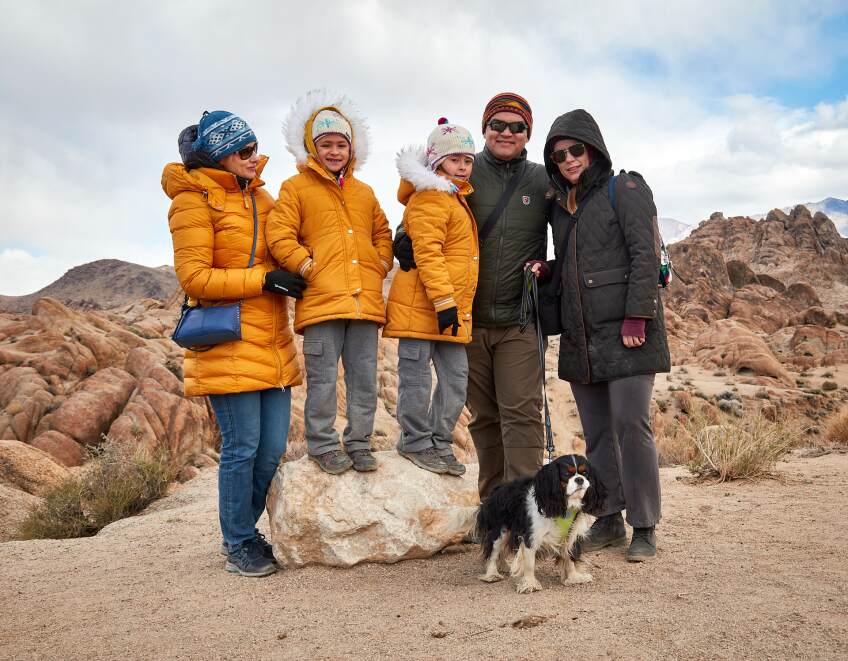
In conclusion, I find myself cautiously optimistic about our landscape's future. Science, the "spatial turn," new insights into our national human values and toxic behavior and the spatial humanities are focusing on deleterious erosion of the planet's habitats. Perhaps most important in the United States, is a renewed interest in adapting the values and practices of this land's original inhabitants, the American Indians.
This knowledge and understanding will need to be expressed in everyday parlance for the busy working person, whether at home or in the workplace. Governments across the world must struggle to initiate effective programs to address the environmental challenges ahead. Without forgetting the rampant toxic hyper-individualism, a more positive, informed and sensitive approach is starting to appear.

So what can you do to help?
Many visitors to the Alabama Hills mistake perfectly healthy vegetation for dead. Unaware, they walk on or drive over dried out-looking desert plants which, due to the dry climate, require decades to fully recover. Be mindful and honor the beautiful desert landscapes you've travelled so far to enjoy. Nature and future generations will appreciate your attention. And tell you friends, "Don't crush the brush!"










